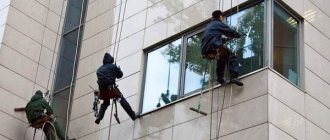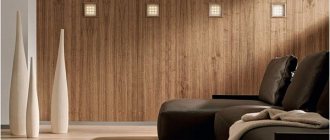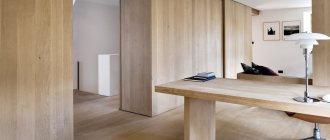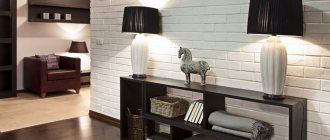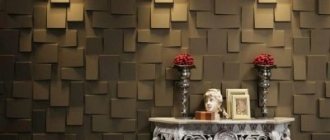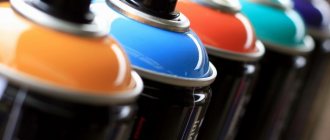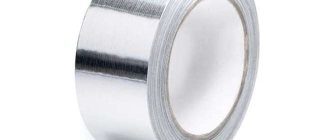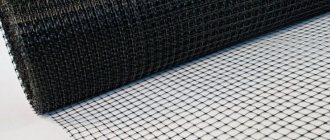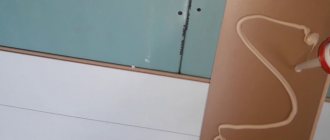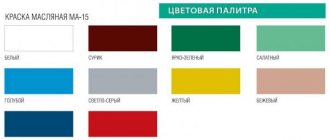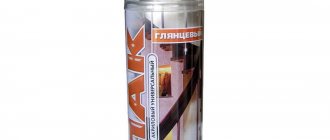Of all the facing materials, it is advisable to use aluminum composite panels (ACP) for installing a ventilated façade. The wide popularity of aluminum panels is due to their increased mechanical strength, ductility, resistance to precipitation; in addition, the material is practically resistant to corrosion and has an original design.
This article is entirely devoted to aluminum composite materials. The relevant sections will describe the design, types and scope of use of automatic transmissions. Separately, the technology of fastening aluminum composite plates will be considered. As additional information, a list of leading manufacturers is provided, whose products are in high demand, both in large-scale construction and in the private sector.
What is Alucobond
Alucobond is a composite material combining polymers and aluminum. The polymer may vary in type and thickness, which will determine its performance. The name of the material is a common noun for blocks produced by various companies. There are 16 companies operating in Russia alone; in addition to Alucom, products are manufactured by manufacturers Bildex, Alkotek, Kraspan, and Grossbond.
Structure of composite panels
Alucobond restoration panels mainly include 2 sheets of aluminum with a mineral filling in the middle and a protective coating in several layers. Such a device will provide the necessary strength and resistance to external influences. Panel arrangement:
- The base is 2 sheets of aluminum with anti-corrosion coating.
- The filler is a polymer made from synthetic materials. High-quality polyethylene foam is often used. The operating parameters of alucobond will depend on the type of filler and thickness.
- The coating inside is an anti-corrosion compound applied to the primed coating of the panel. The protective layer will prevent damage to the material during contact with surfaces made of various materials.
- The top coating is a layer of polyester or carbon with fluorine. It is distinguished by increased light resistance and chemical inertness. In view of this, the product can be used for cladding facades in regions with difficult climates.
- Outer Film - Applied over the protective surface to ensure integrity during handling and installation.
During manufacturing, the product is cut into slabs of standard dimensions. In addition, they produce cassette panels that can be used as facade cladding without trimming or other actions.
Important! An additional advantage of PVDF will be its plasticity. Even when bent, the fluorocarbon layer will not crack or peel off, which will increase performance parameters under the influence of temperature.
What are aluminum composite panels
Aluminum composite panels are a durable and plastic facing material with high thermal insulation properties.
The high strength characteristics and ductility of the plate are ensured by two aluminum layers, the thickness of which can range from 0.2 to 0.5 mm. The filler is most often non-flammable polyolefins or a mineral heat insulator, which are bonded to the base using molecular adhesives.
The front part of the panel is coated with PVDF polymer coating, which is highly wear-resistant and weather-resistant. The back side of the panel is covered with a protective PE coating, which prevents the aluminum base from being exposed to aggressive chemical compounds. To prevent damage to the panels during transportation and storage, the front part is covered with a protective film, which is removed after completion of installation work.
Technical characteristics of Alucobond
The panels in question do not have significant thermal insulation. The main technical indicators of such products help to equalize the temperature characteristics of each aluminum sheet. The purpose of the material is ventilated facade systems, therefore alucobond will create proper heat transfer. Strength is determined by the following characteristics:
- Modulus of elasticity during bending.
- Strength during bending.
- Tensile strength.
- Elongation during rupture.
- Sound absorption coefficient;
- Sound absorption (taking into account the thickness of the product).
The key parameter will be the degree of flammability, on the basis of which the corresponding fire safety certificate will be issued.
Proper sound absorption is guaranteed by the structure of the material. Due to its multi-layer nature, the panel will protect the building from noise and also eliminate vibration.
Important! High technical indicators will make it possible to use alucobond without restrictions during the construction of buildings for various purposes.
Dimensions
Products of the “plus” type have a maximum width of 1.5 m, which exceeds the minimum by 0.5 m. In the first type of panels, B2, the width is 1 m, the second - 1.25 m. There is also size 2 A2 with a width of 1.5 m, but it is quite difficult to purchase.
Aluminum composite
The standard panel length will be 2.4-5 m, however, it is often possible to notice non-standard slabs on the facade. This is due to the peculiarities of production. The length is selected according to the design of the structure. Although sheet sizes vary, there are still limits. The greatest length during which technical indicators are maintained is 6 m, and the width is 1.6 m.
Leading manufacturers of aluminum panels for facades
Currently, the following aluminum composite materials are in greatest demand:
The products of the Alkotek production association have long been in deserved demand among domestic developers. The high quality of the produced composite panels and a large selection of colors allow the use of Alkotek ACP to implement any design solutions.
AlcoteK facing slabs are produced in widths of 1.22 and 1.5 m. The length of the panels is determined by customer requirements and can range from 2 to 8 m. The modifications currently in greatest demand are: AlcoteK B2®, AlcoteK®, AlcoteK FR® , AlcoteK FR Plus®.
"Alucobond"
The company has been operating in the Russian market for more than 15 years, and during this time it has managed to take a leading position in the production of composite aluminum materials. Most often, Alucobond ACPs are used for the installation of ventilated facades of varying complexity. In addition, the material has found the widest application in the manufacture of advertising structures and small architectural forms. A wide selection of colors and textures allows you to use Alucobond ACP not only for exterior work, but also for interior decoration.
"Bildex"
Composite materials are widely used for decorative cladding of facades, installation of advertising structures, as well as for interior decoration of residential and office premises. A long period of operation and high wear resistance of products are ensured by a special protective and decorative PVDF coating. A large selection of textures and colors allows you to choose a material that ideally matches the overall architectural concept or design solution.
With standard widths of 1220 and 1500 mm, the length of the slab can vary from 2000 to 6000 mm, according to customer requirements. Depending on the purpose, the thickness of the cassette can be 3 or 4 mm.
"Goldstar"
Goldstar automatic transmissions are produced by the Aluminstroy production association. Innovative production technology and the use of the latest equipment have made it possible to launch the production of composite panels that meet all existing quality and fire safety standards. The company's model range includes several series, the most popular of which are: “Chameleon”, “Pearl”, “Classic” and “Quartz”.
The standard length of the slabs is 4000 mm, however, if necessary, slabs of any length can be produced in the range from 1850 to 6000 mm.
"Kraspan"
Another Russian manufacturer of composite materials, the quality of which is not inferior to foreign analogues. The main features of Kraspan aluminum composite boards are high fire resistance and strength. The plasticity of the products makes it possible to cladding facades with complex configurations, including radius elements. A variety of colors and textures makes it possible to bring to life the most original design developments.
In addition to facing slabs, it produces elements of load-bearing systems for the installation of ventilated facades and the construction of various building structures.
"Grossbond"
AKP "Grossbond" belongs to the class of universal finishing materials. The main area of application of Grossbond composite boards is the cladding of facades; in addition, the material is actively used in creating interiors, making signs, signs, billboards and special furniture.
Grossbond panels fully meet all fire safety requirements, which is confirmed by the availability of appropriate certificates. In addition to composite materials, the company produces subsystem elements from structural galvanized steel and aluminum alloys.
The rapid development of construction technologies can significantly speed up the process of construction and installation work. The use of aluminum composite panels not only makes it possible to quickly cladding or produce an advertising structure, but also ensures a long service life and high aesthetic characteristics of the facade.
Scope of application of Alucobond
The material is classified by type, as well as by color and texture. Indicators determine the style of the building. There are blocks that are made to look like wood, metal, or imitate stone. The material is rarely used for private buildings, since such panels are predominantly industrial.
Private owners do not buy alucobond due to the price, but for the facade of high-rise buildings and shopping centers it will be the optimal solution. The advantage is that, due to its low mass, the material will give the least load to the base. Alucobond is quite easy to install, which will help complete all facing work in a short time.
Facade panels are often used, since the interior is rarely finished with a composite option. The products are in particular demand for billboard advertising. While it is used throughout the façade and cladding works of buildings, alucobond is used fragmentarily in the construction of private houses.
Processing methods for composite materials
To obtain the required configuration of a composite panel, the following types of processing can be used:
- rolling.
This type of processing makes it possible to obtain panels intended for cladding curved surfaces; - drilling and milling.
Used to make holes and change the shape of the panel. Often used in the manufacture of small architectural forms and outdoor advertising elements; - sawing
Allows you to obtain a cassette with the required overall dimensions. This type of processing is the most common.
Important! When cutting an automatic transmission, you should not use a grinder, since a significant increase in temperature in the cutting zone can damage the protective and decorative coating. After completion of the work, the cut must be treated with a special polymer composition.
- flexible.
The plasticity of the material allows the panels to be given an angle of 900 or more, without compromising the integrity of the protective and decorative layer.
Composite panel Alucobond: pros and cons
The product is quite popular in the production of outdoor advertising, installation of ventilated facade panels, etc. It is due to the following advantages.
Pros:
- Reliability and durability. Alucobond finishing lasts 25-45 years without major repairs. The appearance practically does not deteriorate.
- Proper sound and heat insulation. The internal layer will reduce thermal conductivity, and the unequal density will eliminate noise from the outside.
- Light loads. The low weight and simplicity of the device will reduce the load on the base.
- Simple processing. No special equipment required. The material can be easily sawed, bent, rolled, etc.
- Vibrant look. Products are produced in a large palette. Therefore, choosing the optimal color will not be difficult.
Minuses:
- Fire resistance. Budget types of panels ignite and burn easily.
- Difficulties with repairs. To replace one damaged component, adjacent ones are often removed.
- Overcharge. Refers to “branded” products. It is possible to find more budget-friendly panels, but this will affect the quality or duration of operation.
Advantages and disadvantages of aluminum-based composite panels
The main advantages of automatic transmissions, which ensured their wide popularity, are:
- low specific gravity.
Even with the maximum panel thickness, the weight of 1 m2 of composite cladding does not exceed 8 kg; - high strength characteristics and rigidity.
These material properties make it possible to produce large-sized panels, which significantly increases the speed of installation work; - plastic.
This property allows the use of aluminum composite panels for cladding facades of any configuration, columns, arches, etc.; - increased sound insulation properties.
Due to the presence of a polymer or mineral layer, composite cladding significantly reduces the noise level inside the building; - ease of processing.
ACPs are easily amenable to all types of mechanical processing, which allows the panels to be given any configuration directly at the installation site; - resistance to aggressive environmental influences and ultraviolet radiation.
These properties allow you to maintain the attractive appearance of the cladding for a long time; - high corrosion resistance.
Aluminum panels are resistant to all types of corrosion, which ensures a long service life of the material; - variety of textures and colors.
A wide selection of decorative protective coatings makes it possible to implement any design solutions; - long period of operation.
High-quality automatic transmissions can last from 20 to 30 years, depending on operating conditions.
The disadvantages of aluminum composite materials include the following features:
- composite materials with a polymer filler and aluminum cladding cannot be considered completely fireproof;
- a significant difference in the coefficients of thermal expansion of the filler and the panel skin can lead to delamination of the product with a significant increase in temperature;
- Composite cladding slabs are practically irreparable.
In addition, the cost of AKP is significantly higher than the cost of other facing materials.
Installation of a ventilated facade with external cladding of Alucobond panels
It is recommended to entrust the installation of alucobond to specialists in this field. The material is quite new, so not everyone can do the cladding of ventilated facades themselves. However, this does not mean that independent installation will become impossible. For these purposes, you will need to make an effort and study the technology of ventilated facade panels.
Tools and materials
When installing alucobond, in addition to facing materials, you will need:
- Profile.
- Brackets.
- Thermal insulation of tiles.
- Vapor permeable gasket.
- Mechanical fasteners.
Tools:
- Drill.
- Metal, brick and concrete drills and drills.
- Screwdriver.
- Level.
- Saw to cut panels.
- Metal scissors.
- Knife.
Important! In addition, scaffolding or a mobile rack will be required. This is due to the nature of the work.
Technology of façade cladding with cassette products
The method under consideration has its own characteristics. Algorithm for performing the work:
- Installation of brackets. The elements are installed and fixed using an anchor. To reduce thermal conductivity, you need to place a paronite gasket under it.
- Installation of thermal insulation. An insulating layer is laid on top of the brackets. The slits are made with a special knife. In addition, following the instructions, it is recommended to lay a waterproofing gasket on top.
- Installation of insulation. The thermal insulation is fixed with dowel umbrellas. All dowels are secured with a nail or locking screw.
- Installation of profiles. Profiles are installed on top of the thermal insulation layer. To secure them to the bracket, you can use screws or rivets. Cassettes can be mounted on a regular profile, but it is optimal to use special products with fasteners.
- Installation of cassettes. The products are applied to the profile and leveled.
- Pre-fixation. The corners of the panels are fixed to the profile using metal screws. During fastening, you need to ensure that the fasteners do not push through the main layer.
- Fixation of fasteners. The plate, which is located in the profile, is lifted with a screwdriver and the cassette is wound.
- Installation of fasteners. The self-tapping screw will fix the plate in the required position. It will remove some of the load from the corners.
- Final installation. Adjacent cassettes are mounted with installed ones. During alignment, the distance between the components of the skin is maintained.
Upon completion of the cladding, the protective film must be removed. It is optimal to do this over 4 weeks, since with longer exposure there is a possibility that the glue will polymerize.
Scope of application of aluminum composite panels
In modern construction and design, AKMs are widely used for:
- decorative cladding and installation of ventilated facades;
- installation of entrance groups of supermarkets, office centers and administrative buildings;
- production of outdoor advertising elements: signs, indexes, lightboxes, pylons, etc.;
- interior finishing and room decoration;
- production of interior advertising elements, exhibition stands, shelving and other structures;
- solving problems related to the industrial design of production and office premises;
- manufacturing of refrigeration chambers and industrial refrigeration equipment;
- production of specialized equipment: kungs, cabins, refrigerator cars and automobile freezers;
- creating small architectural forms such as pavilions, kiosks, signs, steles, etc.;
- production of special furniture operating in conditions of high humidity over a wide temperature range;
- construction of partitions and installation of hanging systems.
The best analogues
The production of alucobond panels is now carried out in a number of countries. Products that are manufactured in Germany, China, etc. are available on the Russian market.
The question often arises whether there is a difference between ekopen alucobond and engelberg, which panels are better to install. Each of them is characterized by certain advantages. Regarding alucobond from Germany, it is considered the most expensive. Transportation, customs duties, etc. increase the cost, so not everyone is able to purchase the goods.
Panels that are produced in China have a budget price. Analogs from Chinese manufacturers are much inferior in quality to products from Germany.
It is extremely unusual for joint production of Chinese-German companies, which combine control over the products produced and adequate cost. Today, alucobond panels are gradually increasing their popularity. It is an excellent cladding material that has found application in many construction fields. The products are produced under the same brand. Such panels are characterized by an impressive range of colors. Used for external and internal cladding work. However, before choosing a product, you need to familiarize yourself with the technical characteristics.
